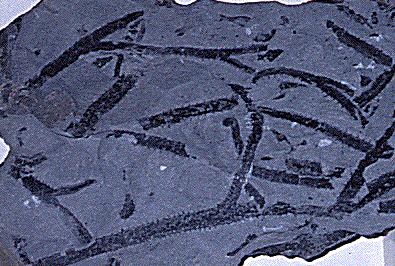 |
 |
 |
 |
 |
Produced
by the Population Genetics and Evolution class, Furman University |
||||
 |
 |
 |
 |
 |
Produced
by the Population Genetics and Evolution class, Furman University |
||||
 |
The
Devonian: Zosterophyllophytes |
 |
||
| Zosterophyllophytes
are an extinct group of vascular plants. They resembled rhyniophytes and
probably evolved from a rhyniophyte-like ancestor. They are thought to
be the predecessors of Lycopods. They are important because they, along
with rhyniophytes and trimerophytes, were early colonizers of the land
(Waggoner 1996). Zosterophyllophytes did not have true leaves or roots (Waggoner 1996). Instead, photosynthesis took place on its stem, evidenced by the presence of stomates (Holt 2009). They exhibited dichotomous branching and had scale-like flaps of tissue called enations (Waggoner 1996). There seemed to be two different growth patterns displayed by Zosterophyllophytes. Plants with terminate axes usually exhibited radial symmetry and plants with nonterminate axes usually exhibited bilateral symmetry (Niklas and Harlan 1990). However, it seems that Lycopods arose from the plants with nonterminate axes and radial symmetry, and the other forms were a dead end (Niklas and Harlan 1990). Page by Laura Snyder |
 |
| Zosterophyllophytes. Photo from: University of California Museum of Paleontology | |
|
Holt JR. 2009. Introduction to the Zosterophyllophyta. Susquehanna University. Accessed Feb 25, 2010. Niklas KJ, Harlan PB. 1990. A reevaluation of the Zosterophyllophytina with comments on the origin of Lycopods. Am J Bot. 77(2):274-283. Waggoner B. 1996.Introduction to the Zosterophylls University of California Museum of Paleontology. Accessed Feb 25, 2010. |